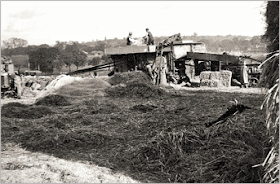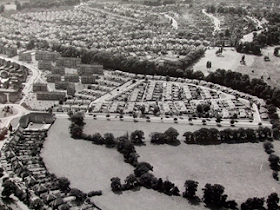 |
| The proposed buildings on Sudbury Town Station Car Park |
Note: Please note the press and public will be welcome to attend this as an online virtual meeting. The link to attend and view proceedings will be available via the Live Stream page on the Democracy in Brent website.
The Agenda does not state how members of the public may make representations at the meeting, a normal Planning Committee provision, which ensure the public's voice is heard.
However,in correspondence with former Council Leader and Liberal Democrat General Election Candidate, Paul Lorber, the Council has stated:
It is possible to speak at the Committee Meeting (online or via the telephone) subject to the restrictions set out in the Council's Standing Order. These provide for one objector and/or one supporter of the application to speak. The Chair has the discretion to increase this to two people from each side. In doing this, the Chair will give priority to occupiers nearest to the application site or representing a group of people.Apart from the Sudbury Town Station proposal that Lorber was concerned about (see image above) there are also applications for a mixed used development at the Abbey Manufacturing Estate/Edwards Yard site in Wembley for 3-14 storey buildings, an 11 storey building on the site of Ujima House in Wembley High Road, and Peel Precinct and neighbouring sites in South Kilburn for 7 buildings of 5-16 storeys.
To address the committee you must speak to Democratic Services at least one clear day before the meeting. Please telephone the Democratic Services Officer, Mr Joe Kwateng, on 020 8937 1354 during office hours or email committee@brent.gov.uk
A pretty heavy agenda by any measure and issues on which the public may well want to make representations.
Paul Lorber wrote to Brent Council CEO outlining his concerns over the absence of site meetings as well as the rights of residents witout internet access:
As you know I raised with you concerns about dealing with Planning Applications during this crisis. As in most cases applicants will not be able to pursue or implement any approved applications there seems no great urgency to rush applications through and deny members of the public an opportunity for a proper say.It is normal for many residents to attend Planning Committee when they are concerned about an application. Determining applications on line denies them this opportunity. Any resident not on the internet or not familiar with the new technology faces an even greater disadvantage and unfairness.
Lorber has now issued a formal complaint as a result of his dissatisfaction with the Council's response to his letter:It has been a long standing practice in Brent for many decades for planning applications which are either controversial or subject to great concern or opposition from residents to be subject to a site visit. Site visit were an important opportunity tfor members of the Planning Committee to better understand the concerns being raised and to see things on site. The reasons for this are obvious - explanations and information on paper only do not tell the full story.The planning site meetings are also an opportunity for residents to point out the their concerns directly to Councillors.I am concerned that going ahead with planning applications subject to Planning Committee Meetings, because of the nature of the application or the large level of opposition,in the way proposed undermines the normal Brent Council approach of meaning full public involvement and Brent Council's commitment to Open Government. All the advantage is handed over to the Applicants who have had the opportunity of direct access to Council Officers denied to the members of public. It is those officers who then advise Councillors in Planning pre meetings or in other ways outside of public scrutiny.The lack of site meetings as a major change to the way planning meetings have been dealt with in the past which also undermines the whole process.In my view Brent Council should suspend dealing with any applications which are subject to material number of objections and only deal with applications which fall into the category dealt with under delegated powers or those where no materail number of objections have been received.Besides the risk of extra challenges to decisions were made there is a much more serious issue of public confidence in the whole planning process in Brent.I trust that you will consider my concerns seriously and suspend the process of dealing with Planning Applications in the proposed way.
The Brent Council decision to proceed with planning applications in the way proposed in your letter has a number of implications:1. It denies members of the public (or even Councillors) to request a site meeting.2. It denies any member of the public without the internet or ability to join the online meeting of the right to participate.In view of this any consideration of this application should be deferred until such time as things return to normal, site meetings are possible and all memebers of the public are free to attend a normal Planning Committee Meeting in Brent.


















